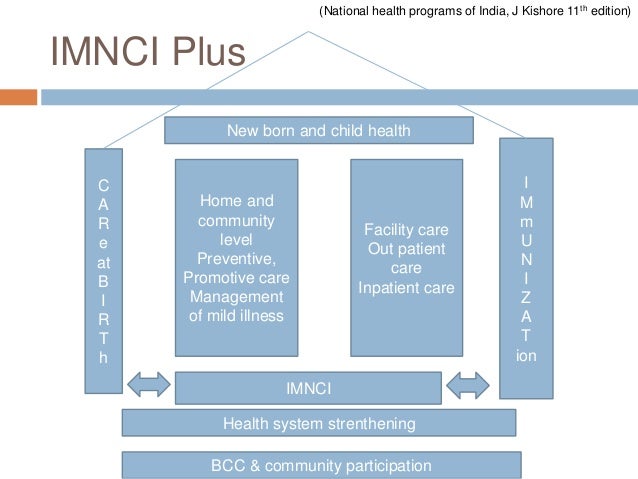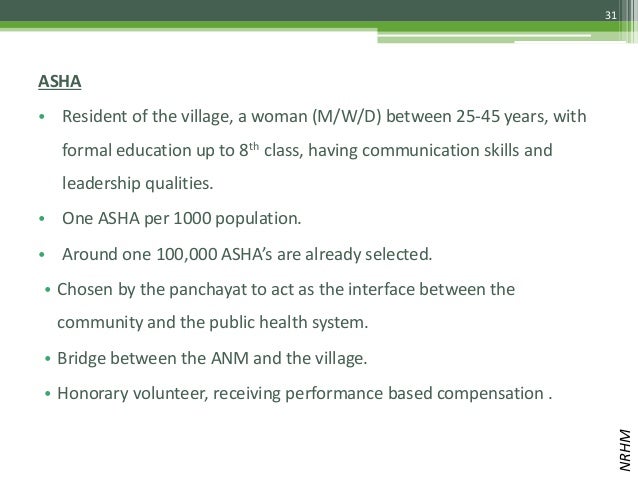National Health Programs Of India J Kishore M
Men play a significant role in all spheres of domestic life including reproduction. Youth is a period of critical development and ignoring sexual and reproductive health (SRH) needs of young men ought to have wider social and health consequences. Aims and Objectives. To assess the knowledge, attitude, and perceptions regarding SRH among young unmarried men (18–25 years). Settings and Design.
A semiqualitative study conducted across four health centers (2 rural, 2 urban) across Delhi. Materials and Methods. Focus group discussions (FGDs) were held among sixty-four participants regarding various aspects of SRH. Data Analysis. The data generated were analyzed using free listing and thematic content analysis along with simple quantitative proportions for different variable groups. Good knowledge regarding HIV/AIDS was observed though found poor regarding other STIs/RTIs. Inadequate knowledge and negative attitude towards SRH and condom use were observed among rural participants.
Peer group and mass media were the commonest SRH information sources among rural and urban participants, respectively. Poor SRH knowledge, perceptions, and available nonformal, unreliable information sources expose young men to poor SRH outcomes. Early, comprehensive SRH information provision can have life-long protective benefits to them and their partners. IntroductionGood reproductive health should include freedom from risk of sexually transmitted diseases, the right to regulate one’s own fertility with full knowledge of contraceptive choices, and the ability to control sexuality without being discriminated against because of age, marital status, income, or similar considerations.
Male involvement in reproductive health issues had been poor in India and women often depend on husband and other family members for making decision in sexual and reproductive health matters. Men are mutually indispensable partners in sexual and reproductive relationships, marriage, and family building and should be potential partners and advocate for good reproductive health rather than bystanders, barriers, or adversaries. The WHO (1998) emphasized that men should be empowered through the provision of information and services targeting boys, youth, and adults within home, community, and work settings.With advent of HIV/AIDS pandemic, increasing prevalence of STIs, and the problem of unwanted pregnancies, need of male involvement has become important than ever before.
A study done in Bangladesh found significant association between husbands’ fertility preferences, background and socioeconomic characteristics, and current use of any family planning method by the couple. The problem is profound in rural areas where inadequate health services, lack of information, social stigma, and policy barriers combined with personal and cultural fears predispose young people to poor knowledge, attitude, and practices regarding SRH.
E…
In a study conducted on young unmarried rural Indian men it was seen that their sexual and reproductive health (SRH) knowledge is limited, although the majority were familiar with condoms (99%). Electronic mass media (67%) were the prime source of reproductive health information, yet they lacked detailed knowledge of various contraceptives and felt ignored by health providers, who, they felt, would be capable of providing SRH information through interpersonal communication.A similar study among Khairwar tribe males reported that only 17% of respondents had ever heard of HIV/AIDS infection and STI/RTIs and most had no proper knowledge of its transmission. Lack of correct knowledge regarding reproductive and sexual health among men could be detrimental to their SRH and of their sexual partners. Early sexual activity outside marriage exposes many young men to the risks of unwanted pregnancy and STI/RTIs. In a study done in Turkey, male university students who were sexually active lacked enough knowledge about family planning methods and were reported to engage in high risk behavior. In a similar study in Mumbai, India, it was reported that most sexually active college students did not use condoms and a substantial number of them had sex with commercial sex workers (CSW).Young adulthood is a period of critical development involving physical, physiological, cognitive, and psychosocial changes.
Increasing evidence exists that ignoring SRH needs of young men has wider social and health consequences. In a study done in two boys and two girls’ senior secondary schools of rural Delhi, it was found that 25% students had premarital sexual experience. In a study done among male college students of Mumbai it was observed that exposure to erotic materials, a liberal attitude towards sex combined with poor knowledge, and perceived peer norms regarding sexual behavior are some of the most important predictors of risky sexual behavior among male students.Due to the sensitive nature of the subject, little is known about burden and factors associated with SRH problems among men and their knowledge, attitudes, and practices. A study carried out on 120 men attending a reproductive health checkup in a village in rural West Bengal, India, found that SRH issues prevalent and concerning men were sexual weakness, itching around genital areas, burning sensation during urination, early ejaculation, wounds on the genitals, white discharge, and so forth.

Other issues raised by men included masturbation, nocturnal emission, consequences of loss of semen, menstruation, pregnancy, and AIDS. Despite wide range of morbidities concerning SRH, treatment seeking behavior among people remains poor as shown in surveys conducted in Bangladesh and India where most people with STI symptoms seek care from unregulated (untrained) private practitioners.
The National AIDS Control Organization in India estimates that only 5–10 percent of patients with STIs present to public sector health care. This is true not just for STIs, but for a wide range of curative services, and it is not only the economically wealthy who seek private medical care; the poor also choose private providers for a variety of reasons.Young men are frequently more willing to consider alternative views about their roles in reproductive health and if brought into a wide range of reproductive health services, better SRH outcomes can be expected however; despite all the evidence, there remains a poor male involvement in SRH matters and keeping in view such deficiency the current study was planned and conducted. Subjects and Methods 2.1.
Study LocationsThe present study was carried out at four different locations (health centers) affiliated to the Department of Community Medicine, Azad Medical College, New Delhi. These health centers were conveniently chosen as they were functioning under investigator’s parent department and had well-maintained population records to facilitate community health action. Two of the health centers were located in rural areas (Pooth and Barwala village) and the other two were urban health centers (Balmiki basti slums and Gokulpuri resettlement colony).
Study DesignIt was a semiqualitative study, conducted to assess young men’s SRH information needs, perceptions. And preferences through focus group discussions (FGDs). Semiqualitative research involves systematic integration, or “mixing,” of quantitative estimates within qualitative data therefore permitting a more complete understanding and synergistic utilization of data. Sample Design and ImplementationA convenient sample size of sixty-four was predetermined by the authors based on availability of resources and time constraints.
Therefore, to maintain uniformity sixteen participants were included from each health center by selecting first eight eligible men attending general outpatient clinic on two randomly selected days. In case of any refusal the next eligible person was asked to participate in the study. Nonpermanent residents, those not falling in age bracket (18–25 years), and participants with SRH complaints were excluded from the study. Study MethodologySelected participants were informed regarding the subject and objectives of the study and informed verbal consent was obtained. The majority of participants were participating for the first time in similar discussion. Prior approval for conducting the study was taken from designated officials at the health centers and community members. A total of eight FGDs consisting of eight participants in each session were held at selected health centres.
The study participants were grouped on the basis of their place of residence (rural/urban) during data collection. However, during data analysis stage they were grouped on the basis of residence, education, and age for differential comparisons. The FGDs were carried out at designated health facilities in separate rooms with adequate facilities and privacy. Due to confidentiality of the study participants proper care was taken during data analysis and publication. Study participants were not paid any incentives for participating in the study.Discussions were held in Hindi language which is the vernacular language of the region and was easily understood by participants. With participants’ permission, audio tapes were used to record proceedings from the FGDs. Two male researchers, one investigator and the other recorder/facilitator, conducted the sessions ranging in length from one to one and half hours.
To facilitate equal participation, ground rules were communicated to the participants at the outset of discussions. Group members were asked to respect other participants’ confidentiality and privacy, wait for their turn to sign or speak, and respect the right of everyone to freely express their views.Sexual and reproductive health (SRH) is defined as “a state of complete physical, mental and social well-being and not merely the absence of disease or infirmity, in all matters relating to the sexuality and reproductive system. Sexual and Reproductive health therefore implies that people are able to have a satisfying and safe sex life and that they have the capability to reproduce and the freedom to decide if, when and how often to do so”. Good SRH knowledge indicates sufficient knowledge of key sexual and reproductive health (SRH) topics and issues.
The topics should reflect those of primary importance for protecting and promoting SRH. References. United Nations, Fourth World Conference on Women, Action for Equity, Development and Peace, United Nations, Beijing, China, 1995. Jayalakshmi, K. Prabhakar, and P.
Swain, “A study of male involvement in family planning,” Health and Population: Perspectives and Issues, vol. 113–123, 2002. View at:. World Health Organization, Reproductive Health Strategy for the African Region 1998–2007, WHO Regional Office for Africa, Harare, Zimbabwe, 1998. Phillips, and A.
Mozumder, “The effect of husbands' fertility preferences on couples' reproductive behaviour in rural Bangladesh,” Journal of Biosocial Science, vol. 745–757, 2007. View at:.
A. Saavala, and T.
Kulmala, “Assessing young unmarried men's access to reproductive health information and services in rural India,” BMC Public Health, vol. 11, article 476, 2011.
View at:. K.

Chatterjee Saha, and J. Roy, “Male involvement in reproductive health among scheduled tribe: experience from Khairwars of central India,” Rural and Remote Health, vol. View at:. N.
Sahin, “Male university students' views, attitudes and behaviors towards family planning and emergency contraception in Turkey,” Journal of Obstetrics and Gynaecology Research, vol. 392–398, 2008. View at:. G. Rangaiyan, Sexuality & sexual behaviour in the age of AIDS: a study among college youth in Mumbai Ph.D. Dissertation, International Institute for Population Sciences (IIPS), Mumbai, India, 1996.
Sharma and V. Sehgal, “Knowledge, attitude, belief and practice (K.A.B.P) study on AIDS among senior secondary students,” Indian Journal of Dermatology, Venereology and Leprology, vol. 266–269, 1998. View at:.

R. Pulerwitz, V. Mahendra et al., “Challenging and changing gender attitudes among young men in Mumbai, India,” Reproductive Health Matters, vol. 135–143, 2006. View at:. K.
Das, “Male reproductive health: a village based study of camp attenders in rural India,” Reproductive Health, vol. View at:. S. Hawkes and K.
Santhya, “Diverse realities: understanding HIV and STIs in India,” Sexually Transmitted Infections, vol. 531–539, 2002. View at:. United Nations, Programme of Action. Adopted at the International Conference on Population and Development, Cairo, 5–13 September 1994, Paragraph 7.2, United Nations, New York, NY, USA, 1994.
Van Teijlingen, P. Simkhada, and D. Acharya, “Barriers to sexual health services for young people in Nepal,” Journal of Health, Population and Nutrition, vol.
619–627, 2010. View at:. N. Orobaton, “Strategies for increasing male involvement in family planning in Nigeria: a concept paper,” 1993.